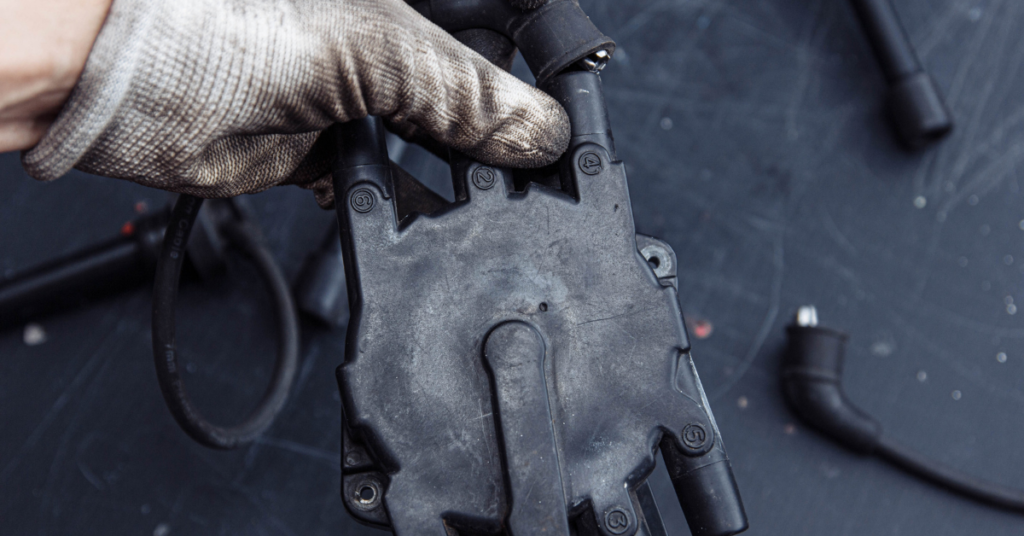
The P0301 Chrysler code in vehicle is related to a misfire in the engine’s cylinders. It specifically indicates that there is a misfire detected in cylinder 1.
When this code appears, it means that the powertrain control module (PCM) has detected an issue with the fuel or ignition system in cylinder 1, resulting in the misfire.
Contents
Symptoms of P0301 Chrysler Code
When the P0301 code triggers, there are several symptoms that may occur. These symptoms can vary in severity, and it’s important to address them promptly to avoid further damage to the engine.
Some common symptoms of the P0301 code include:
Engine Misfire
The most apparent symptom is a noticeable misfire in the engine, particularly when the vehicle is idling or accelerating. You may feel a rough or uneven performance, and the engine may hesitate or jerk during operation.
This can be particularly noticeable in cylinder 1, where the misfire is occurring.
Reduced Fuel Efficiency
A misfire in cylinder 1 can lead to decreased fuel efficiency. When the engine misfires, it fails to properly burn the fuel, resulting in wasted fuel and reduced mileage.
You may notice that your vehicle requires more fuel to cover the same distance, resulting in increased visits to the gas station.
Check Engine Light
The P0301 code will trigger the check engine light on your Chrysler’s dashboard. This serves as a warning to address the issue and have it diagnosed and repaired as soon as possible.
Ignoring the check engine light can lead to further damage to the engine and potentially more expensive repairs.
Lack of Power
A misfire in one cylinder can lead to a decrease in overall engine power. When cylinder 1 misfires, it fails to contribute its full power to the engine, resulting in a noticeable decrease in acceleration and overall performance.
You may notice a lack of power when climbing steep hills or overtaking other vehicles.
Possible Causes of P0301 Code
To effectively diagnose and resolve the P0301 code, it is essential to understand its potential causes. There are several factors that can contribute to a misfire in cylinder 1:
Spark Plug Issues
A worn-out or fouled spark plug can lead to a misfire. Over time, the spark plug may accumulate deposits, corrode, or wear down, affecting its ability to ignite the air-fuel mixture in cylinder 1.
It is important to regularly inspect and replace spark plugs according to the manufacturer’s recommendations.
Ignition Coil Problems

The ignition coil plays a crucial role in providing the spark required for combustion. If the coil is faulty or damaged, it can result in a misfire in cylinder 1. Inspect the ignition coil for any signs of damage, such as cracks or burn marks, and replace it if necessary.
Fuel Injector Malfunction
A clogged or faulty fuel injector can disrupt the fuel delivery to cylinder 1, leading to a misfire. Issues with the injector’s spray pattern, timing, or electrical connection can all contribute to the problem. It may be necessary to clean or replace the fuel injector to resolve the issue.
Vacuum Leaks
Unmetered air entering the intake manifold can cause an imbalance in the air-fuel mixture, resulting in a misfire. Vacuum leaks can occur due to deteriorated intake manifold gaskets, cracked hoses, or other components in the intake system.
Inspect the intake manifold, hoses, and gaskets for any signs of leaks or damage, and repair or replace them as necessary.
Low Compression
Insufficient compression in cylinder 1 can cause a misfire. This can be caused by worn piston rings, a damaged cylinder head gasket, or valve-related problems.
Perform a compression test to check the cylinder’s compression in question. If low compression is detected, further inspection and repairs may be necessary.
Grasping the commonality of misfires fosters a more inclusive understanding, empowering you to navigate through potential solutions effectively.
Diagnosing and Repairing P0301 Code
When dealing with the P0301 code, it is advisable to follow a systematic approach to diagnose and resolve the issue. Here are the steps typically taken by professionals:
Scan the PCM
Begin by using an OBD-II scanner to retrieve the trouble codes stored in the PCM. This will confirm whether the P0301 code is present and provide additional codes if any.
The scanner will also provide valuable data such as freeze frame data, which can help in diagnosing the issue.
Inspect Spark Plugs
Remove and inspect the spark plugs from all cylinders. Pay close attention to the spark plug in cylinder 1. If you notice any signs of fouling, corrosion, or wear, replace all spark plugs and ensure they are properly gapped. This will ensure proper ignition and combustion in all cylinders.
Check Ignition Coils
Inspect the ignition coil connected to cylinder 1. Look for signs of damage, such as cracks or burn marks. If any issues are detected, replace the faulty ignition coil. It is important to use high-quality ignition coils to ensure reliable performance.
Test Fuel Injector
Perform a fuel injector test to ensure proper operation. This can be done using a specialized fuel injector tester or with the help of a professional technician.
If the fuel injector in cylinder 1 is found to be faulty, replace it as necessary. It may also be necessary to clean the fuel injectors to remove any deposits or clogs.
Address Vacuum Leaks

Inspect the intake manifold, hoses, and gaskets for any signs of leaks or damage. Vacuum leaks can disrupt the air-fuel mixture and cause a misfire.
Repair or replace any components that are causing vacuum leaks. It may also be necessary to perform a smoke test to identify hidden vacuum leaks.
Compression Test
If all other potential causes have been ruled out, perform a compression test to check the cylinder’s compression in question. Low compression may indicate a more serious issue, such as a damaged cylinder head gasket or worn piston rings. Further inspection and repairs may be necessary in such cases.
Clear Codes and Test Drive
After completing the necessary repairs, clear the trouble codes from the PCM using the scanner. Take the vehicle for a test drive to ensure the misfire has been resolved and that the P0301 code does not reappear. Monitor the engine’s performance and check for any remaining symptoms.
Conclusion
The P0301 code in a Chrysler vehicle indicates a misfire in cylinder 1. Promptly addressing this issue is crucial to prevent further damage to the engine and ensure optimal performance.
By following the systematic diagnostic and repair steps, you can effectively resolve the P0301 code and restore your Chrysler’s smooth operation.
Remember, if you are unsure or uncomfortable with performing these tasks yourself, it is always best to consult a qualified automotive technician.
FAQ
Q1: What does the P0301 code indicate in a Chrysler vehicle?
The P0301 code indicates a misfire in cylinder 1 of the engine in a Chrysler vehicle.
Q2: What are the symptoms of the P0301 code?
The symptoms of the P0301 code include engine misfire, reduced fuel efficiency, check engine light illumination, and a lack of power.
Q3: What are the possible causes of the P0301 code?
The possible causes of the P0301 code include spark plug issues, ignition coil problems, fuel injector malfunction, vacuum leaks, and low compression.
Q4: How can the P0301 code be diagnosed and repaired?
The P0301 code can be diagnosed and repaired by scanning the PCM, inspecting spark plugs and ignition coils, testing the fuel injector, addressing vacuum leaks, performing a compression test, clearing codes, and taking the vehicle for a test drive.



